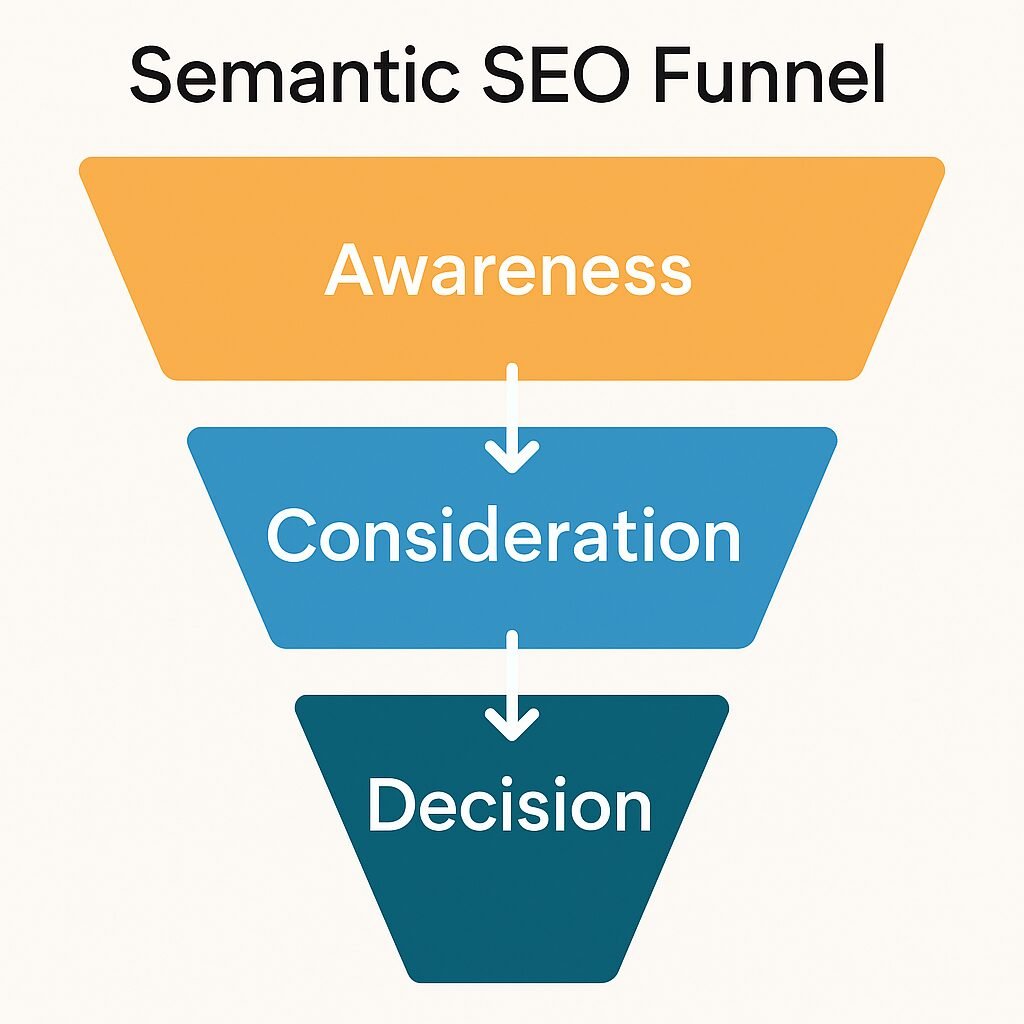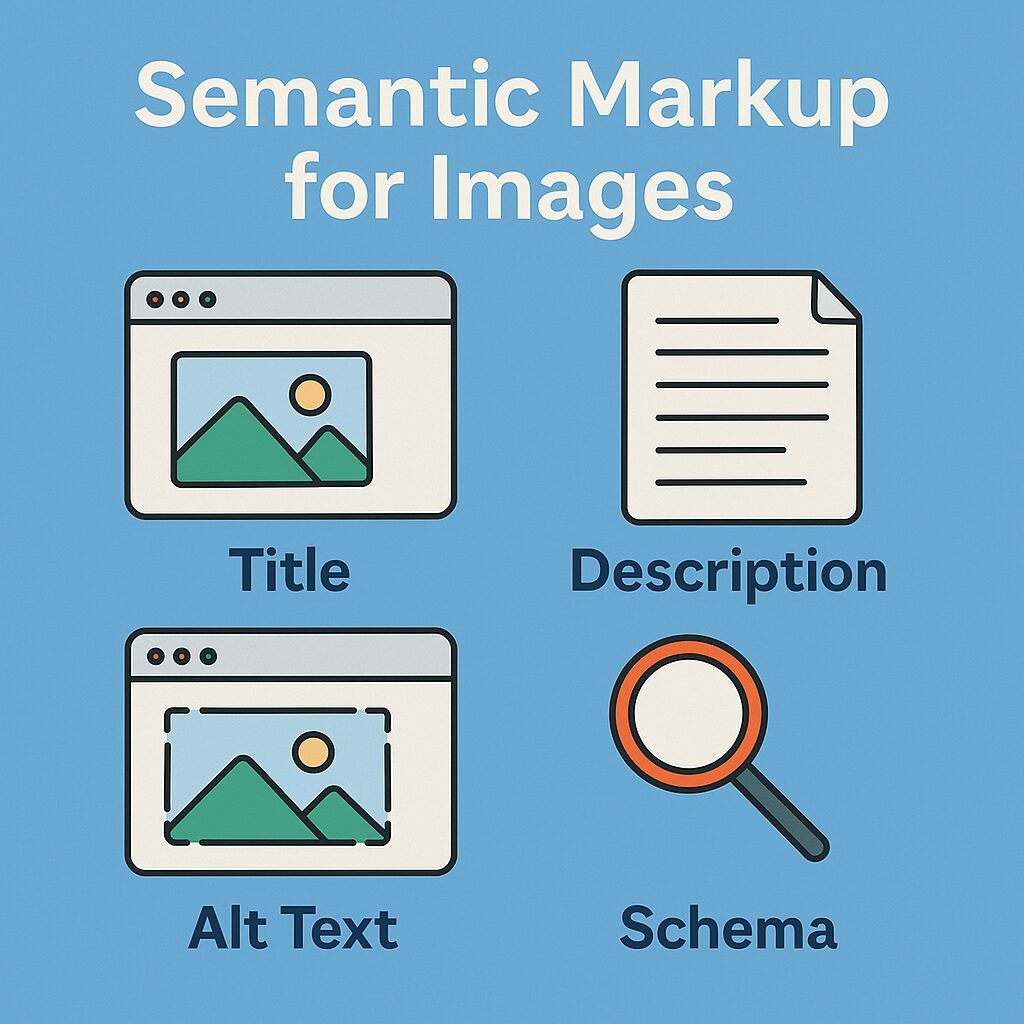

Tired of Chasing Keywords That Don’t Convert?
If you’re running a service-based business, whether you’re a marketing consultant, developer, agency owner, or lawyer, you’ve probably heard this before:
“Just use the right keywords and you’ll rank.”
So, you:
→ Stuffed keywords into your homepage
→ Wrote blog posts with titles like “Top 5 Tips for [Your Industry]”
→ Hired a freelancer who promised “SEO content” for $50
But after all that, you’re not getting the leads you expected. The traffic you do get doesn’t convert. And you’re wondering if SEO is even worth it anymore.
Here’s the thing most people don’t tell you:
Google has evolved. The way people search has changed. But most SEO strategies haven’t caught up.
That’s where Semantic SEO comes in a modern approach to SEO that reflects how people actually search, and how Google actually understands content today.
What Is Semantic SEO?
At its core, Semantic SEO is about creating content that reflects the meaning behind search queries — not just the exact words people type into Google.
Instead of obsessing over whether someone searches for “web designer in Toronto” or “Toronto web development expert,” semantic SEO asks: “What is this person really looking for?”
→ Are they comparing platforms?
→ Do they want to understand pricing?
→ Are they looking for someone specialized in a niche?
Semantic SEO allows you to meet people where they are in the decision-making process. It’s about addressing user intent, related topics, and the broader conversation around your service.
Here’s how it’s different from traditional SEO:
| Traditional SEO | Semantic SEO |
|---|---|
| Focuses on one keyword per page | Focuses on entire topics and related concepts |
| Creates multiple short posts | Builds clusters of content under a central theme |
| Repeats the same keyword | Uses natural language and context |
| Optimizes for bots | Optimizes for humans and search engines |
Think of it like this: Traditional SEO is like writing flashcards. Semantic SEO is like writing a book that teaches the subject.
And because Google is now powered by AI models like RankBrain and BERT, it understands:
→ The intent behind queries
→ The context of your content
→ The entities and topics your brand is associated with
So if you’re still creating shallow content around individual keywords, you’re probably getting outranked by businesses that are doing less… but doing it smarter.
Why Semantic SEO Is a Game-Changer for Service-Based Businesses
You’re not running a content site. You don’t publish 30 articles a month. You’re a service provider. Your website has a job to do: get people to trust you and take action.
That’s why semantic SEO is such a perfect fit for service-based businesses, it helps you:
✅ Build Trust Through Authority
When your site covers a topic comprehensively (not just briefly), Google starts to see you as an expert. And so do your visitors. It’s the difference between saying “we do SEO” and showing you understand it deeply through real content.
✅ Rank for Entire Search Themes
With traditional SEO, you’d have to write 5 pages to target “website design for realtors,” “real estate website developer,” and “how to build a real estate website.”
With semantic SEO, one well-structured page + supporting content can rank for all of those, and more.
✅ Increase Time-on-Site and Conversions
When your site mirrors the actual buying journey of your customer (awareness → research → compare → decide), people stay longer, click more, and trust deeper. That improves SEO and conversions at the same time.

Step 1: Define Your Core Entity (aka “What Should Google Know You For?”)
This is where 90% of businesses go wrong. They try to be about everything multiple services, audiences, and niches and end up being nothing specific in Google’s eyes.
Your core entity is the main topic (or niche) you want to “own” in search results.
It’s not just what you offer. It’s what you’re building authority around.
Examples:
→ A brand consultant may focus on: Brand Strategy for Coaches
→ A web dev agency may focus on: Conversion-Focused Websites for SaaS
→ A lawyer may focus on: Family Law in California
This becomes your anchor entity, the central hub around which all other content should support, reinforce, and relate.
Google’s Knowledge Graph (the system it uses to connect facts and concepts) relies on entities. If your site is all over the place, you won’t be strongly associated with any one concept.
How to find your core entity
→ Look at your most profitable service
→ Look at what you want to rank for long-term
→ Think about what your ideal clients are searching for, not just what you sell
👉 Pro Tip: Want to see what Google already associates your content with? Use the Google Natural Language Tool — paste a blog post or service page and see what entities Google detects.
Step 2: Build a Topical Map — Not Just a Keyword List
Traditional SEO says: “Find a keyword. Write a blog.”
That worked in 2010. Now, it creates a disconnected mess that doesn’t build authority or meet intent.
Instead, you need a topical map a structured way to cover your core subject in depth.
A topical map helps you:
→ Stay focused on topics instead of random blog ideas
→ See which content types fit different levels of intent
→ Build internal links strategically
How to Build One:
Start with your core topic, then break it down like this:
yamlCopyEditCORE ENTITY: SEO for Coaches
- Subtopic 1: What is SEO for coaches?
- Subtopic 2: SEO vs Social Media – What drives more leads?
- Subtopic 3: Best SEO tools for solo coaches
- Subtopic 4: How to structure your coaching site for SEO
- Subtopic 5: Local SEO tips for online service providers
- Subtopic 6: Common SEO mistakes coaches make
Each of these subtopics can become:
1- Blog posts
2- FAQs
3- Comparison pages
4- Case studies
This structure helps you build content that serves real user journeys not just ranks for phrases.
Tools to Help:
→ AlsoAsked: Maps out “People Also Ask” questions visually
→ AnswerThePublic: Groups search questions by type
→ KeywordsPeopleUse: Scrapes live SERP question data
→ InLinks: Builds entity-based topic clusters and internal link suggestions
Step 3: Cluster Your Topics Around Intent
Not all traffic is equal. A visitor searching “best email marketing software” is in research mode. Someone searching “email marketing consultant near me” is ready to hire.
Semantic SEO is powerful because it allows you to map and target different stages of the funnel within your topic.
Here’s how to break it down:
1. Pillar Content (Awareness + Authority)
→ These are long-form, evergreen guides
→ Designed to establish topical depth and rank for broad topics
→ Example: “The Complete Guide to SEO for Service Businesses”
2. Cluster Content (Consideration)
→ Blog posts and articles that dive deeper into specific sub-questions
→ Example: “Why Local SEO Still Works for Online Service Providers in 2025”
3. Support Content (Decision)
→ Pages designed to convert or show proof
→ Testimonials, case studies, platform comparisons, pricing guides
Each piece supports the others. Each one links to the pillar. And each page helps the next one rank better, because Google sees a unified topic, not a bunch of disconnected pages.
Creating Semantic Content, Structuring Your Site, and Measuring What Matters
Step 4: Write for Semantic Relevance — Not Just Keywords
Most SEO content still sounds like it was written for a robot.
Repetitive phrases. Awkward headings. Thin blog posts that restate the obvious.
Semantic SEO changes the game. You’re no longer writing for a keyword — you’re writing around a topic. And the language you use should reflect how real people talk, search, and think.
Instead of fixating on keyword density, focus on:
1. Covering the full context of a topic
If your blog is about “how to speed up your website,” don’t stop at image compression. Talk about caching, hosting, code bloat, third-party scripts, and mobile optimization.
The goal is to exhaustively answer what someone would want to know about the topic — in one place.
2. Using natural language and variations
You don’t need to repeat “web design for coaches” ten times. Use phrases like:
→ building a coaching website
→ best platforms for coaches
→ optimizing design for conversions
This mirrors how real people search — and how Google understands meaning. It also makes your content more engaging and less robotic.
3. Structuring for readability and flow
Use clear subheadings that reflect subtopics or questions. Paragraphs should be short, purposeful, and conversational. Use bolding or highlights sparingly to draw attention to key ideas.
Semantic SEO doesn’t just care about what you say, it also rewards how easy it is to consume what you’ve said.
Step 5: Add Structured Data to Help Google Understand Context

Think of Structured Data (also called Schema) as a translator between your content and Google.
You might write a guide on “SEO for therapists,” but unless Google sees that it’s a guide, a tutorial, a service overview, or a review, it might miss the bigger picture.
Structured data helps fill in those blanks. It adds machine-readable “hints” that reinforce what your page is and how it should be treated in search.
Here’s how to apply it on a service business site:
For blog posts and guides:
Use Article or HowTo schema to indicate long-form content that provides instruction.
For service pages:
Use Service, LocalBusiness, or Organization schema. Include business name, service type, area served, and key attributes.
For FAQs or common questions:
If you include actual question/answer pairs, you can use FAQPage schema. This can help your content show up in the “People Also Ask” or Rich Result boxes.
For testimonials:
If you feature customer quotes or ratings, consider using Review schema, but only if the reviews are real and clearly marked.
You can generate your own Schema markup easily using tools like:
Once applied, use Google’s Rich Results Test to verify your structured data is working.
Step 6: Build a Smart Internal Linking Structure
Internal linking is one of the most overlooked, underused, and misunderstood elements of SEO — especially for small service sites.
Most people either don’t link at all, or they drop in a few “read more” links at the end of a post.
But in Semantic SEO, internal linking is strategic. It’s how Google connects the dots between your pages. It’s also how you guide users through the journey from education to action.
Here’s how to do it right:
1- Every page should link somewhere — and be linked to by something Orphan pages (pages with no links pointing to them) are SEO dead ends. They’re less discoverable, less authoritative, and often get ignored by crawlers.
2- Link contextually — not just in a footer or sidebar Google gives more weight to links inside the main content area. Link from one page to another where the topics naturally connect. For example, in a post about “homepage design tips,” link to your guide on “writing high-converting service page copy.”
3- Use descriptive anchor text Instead of “click here,” use something like “see our comparison of WordPress vs Webflow for coaches.” This helps Google understand what the linked page is about.
4- Link up and down your topic clusters Every blog post should link back to the relevant pillar content, and that pillar should link out to all related posts. This builds a “semantic net” around your core topic.
If you use WordPress, tools like Link Whisper can automate some of this intelligently.
Step 7: Measure Performance by Topic — Not Just Traffic
One of the biggest mistakes business owners make is evaluating content purely by page traffic.
They look at one blog post, see that it only brought 200 visitors in 3 months, and think it failed.
But with Semantic SEO, we’re not playing the “one page = one keyword” game anymore. We’re building topic ecosystems — and we need to measure performance accordingly.
Here’s what to track instead:
1. Topic-Level Visibility
Use a tool like Ahrefs, SE Ranking, or GSC Insights to group your content into topical clusters. Then monitor:
→ How many total keywords your cluster is ranking for
→ What queries it’s getting impressions for (even if they don’t click… yet)
2. Internal Traffic Flow
Use heatmaps or event tracking (with Microsoft Clarity or Hotjar) to see how people move from one piece of content to another. Are they actually clicking through your cluster?
3. Engagement by Intent Stage
Is your awareness content getting traffic but no conversions? Maybe it needs a stronger call-to-action. Is your service page bouncing people fast? Maybe it’s not answering the right questions.
Semantic SEO isn’t just about visibility. It’s about how your site performs as a system — not isolated parts.
Common Mistakes to Avoid (That Kill Semantic Structure)
These aren’t just technical missteps — they’re strategic traps that stop good service websites from building real visibility.
1. Over-focusing on individual keywords
If your content calendar still says “1 blog per keyword,” you’re behind. Google understands clusters now. You should, too.
2. Creating thin, disconnected content
Writing a short blog post just to “have content” is worse than doing nothing. It wastes crawl budget and confuses your topical map.
3. Ignoring internal linking
If your pages don’t connect, you’re forcing Google to guess what belongs together. It won’t.
4. Stuffing schema without real structure
Structured data is not magic. It works only when paired with high-quality, well-organized content. Don’t treat it like a shortcut.
5. Writing for tools, not humans
Tools like Surfer, Clearscope, or Frase are helpful, but if your content sounds like it was built to hit a score instead of helping someone solve a problem, it will underperform.
Wrapping It Up: Build for Meaning, Not Just Machines
Semantic SEO isn’t just a tactic, it’s a mindset shift. It’s about treating your website like a knowledge base, not a sales brochure. It’s about connecting your content like a story, not a checklist. And most of all, it’s about helping your future customers find you through the questions they’re already asking.
If you’re a service-based business owner, this approach lets you:
→ Rank for a wider range of terms
→ Build trust faster
→ Convert leads without chasing SEO trends every month
You don’t need hundreds of blog posts. You need the right 10–20, built around your core expertise, written with depth, and connected through structure.
And if you’re not sure where to start, I help service businesses map, structure, and write content that actually ranks and converts.
Let’s talk.



